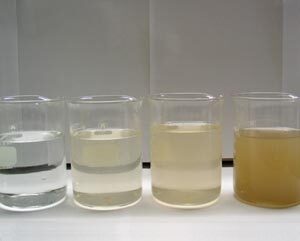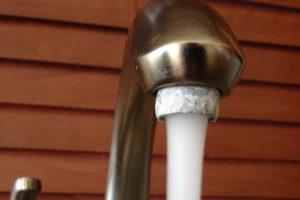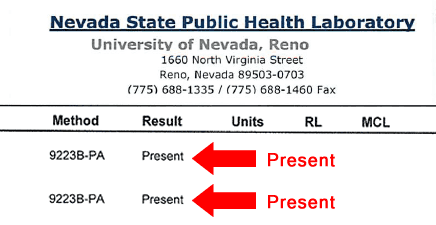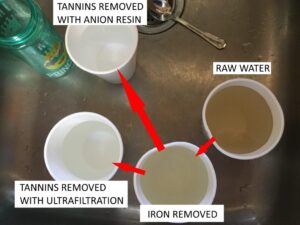If you live in Reno, NV and you’re on a private well, you’ve probably had your well tested for water quality. If not, click here for information on how to do so.
If you just got your water test results back, you may be wondering what the heck all the numbers and acronyms mean. Don’t worry, they’re very easy to read and understand with a little bit of explanation.
Result: This is the level of the contaminant in your water. Results with the less than symbol in front of them are referred to as non-detectable (some labs will use the acronym ND instead of the less than symbol). This means that if the contaminant is present in your water, it is at such a low level that the testing equipment can’t detect it. It’s as close to zero as it gets on a water test.
RL: Reporting Limit. This is the lowest level of a contaminant that the lab’s equipment can test for. Any levels below the reporting limit are referred to as non-detectable (as discussed above).
MCL: Maximum Contaminant Level. This is the level of a contaminant that the EPA has deemed acceptable. MCL is not to be confused with the MCLG (maximum contaminant level goal) which is the level at which a contaminant is known to be safe. Labs usually display the MCL on all contaminants that are a health concern and will show a ‘Failed’ or ‘Over Limit’ note on any contaminant that is higher than the MCL.
Different labs use different units of measurement.
mg/L: Milligrams per liter is the unit used for most contaminants that are not a health concern and converts 1:1 with parts per million (ppm).
µg/L: Micrograms per liter is the unit of measure most labs use for contaminants that are a health concern because a small amount of those contaminants is a bigger concern. Micrograms per liter converts 1:1 with parts per billion (ppb).
The conversion from mg/L to µg/L is as simple as moving the decimal to the right 3 digits. To go from µg/L to mg/L, move the decimal to the left 3 digits.
There are also units of measure that are specific to certain contaminants. CU or color units is a measure of the water’s color rather than a specific contaminant. NTU or Nephelometric Turbidity Unit is what turbidity is measured in. Since turbidity (ability of the water to block light) is a characteristic and not a contaminant, the other units of measure don’t apply.
Some contaminants can be aesthetically annoying even if they’re not over the MCL.

Hardness: Although it’s not a drinking water concern, total hardness will leave scale buildup on appliances and fixtures and cause dry, itchy skin at levels ≥50 mg/L. Many people experience this when they move to Fernley, NV or Dayton, NV. They attribute the dry skin to our climate, but fixing the water makes a huge difference. You may also see scale buildup at even lower levels if silica is present like we see in the Arrowcreek and Saddlehorn areas of Reno.
Iron: Iron can be a health concern in drinking water, but it will leave annoying red stains on everything at levels as low as 0.2 mg/L. We see low levels of iron leave stains often on private wells in Washoe Valley, NV and the North Valleys.

Manganese: Much like iron, manganese will leave black stains and buildup in faucets and toilets long before it is a health concern. Levels ≥0.02 mg/L should be considered for treatment. Manganese is common on wells in Palomino Valley, NV and Fallon, NV.
pH: Low pH can cause corrosion and leaks in plumbing and increase the levels of contaminants like copper and lead on your water report. Increased copper can cause blue staining. pH <7.0 should be corrected in homes with copper pipe or brass fittings. We’ve corrected a lot of pH in the Callahan Ranch area of Reno as well as the Virginia City Highlands.
Some Contaminants are common to our area and may not show up on a water test and some levels.
Tannins: Tannins are tiny bits of organic matter that are suspended in the water and give the water an off color. Tannins are the same thing that create the color in your tea and wine. Tannins may show up on a water test as color, but if iron will also create color and it can be difficult to determine if tannins are present on a water test alone. We can run a couple tests onsite free of charge to determine which you have and what type of treatment is actually going to work.
pH: pH can change rapidly between sample collection and when the lab actually tests it due to variables like temperature and CO2 gas. Most labs will note that the pH is analyzed outside of its hold time and may be inaccurate. For this reason, we always test pH onsite free of charge to make sure we are recommending the right water system. Click Here if you’d like your pH tested onsite.

H2S: Hydrogen sulfide may be present in your water and won’t show up on a water test. H2S is a gas that can be naturally occurring or the result of sulfate reducing bacteria in the water. H2S gives the water a rotten egg or sulfur smell. Either way, the best way to test for H2S is on site. We offer this free of charge. Click here if you’re noticing odor in your water and would like to have it tested.
Don’t see the answer you were looking for in this post? Call our office at (775) 261-8565 and we’ll be happy to assist you further.





